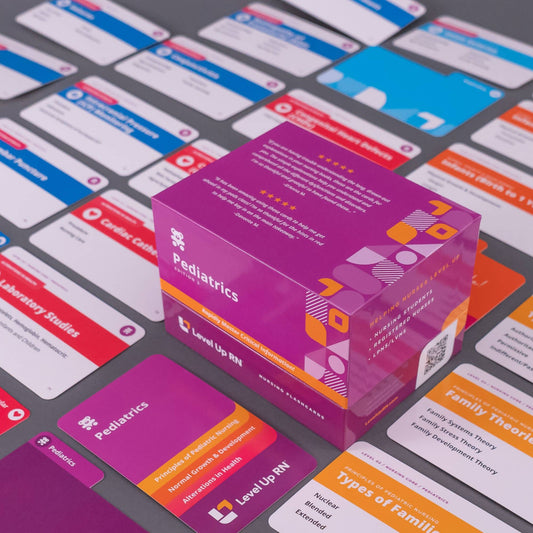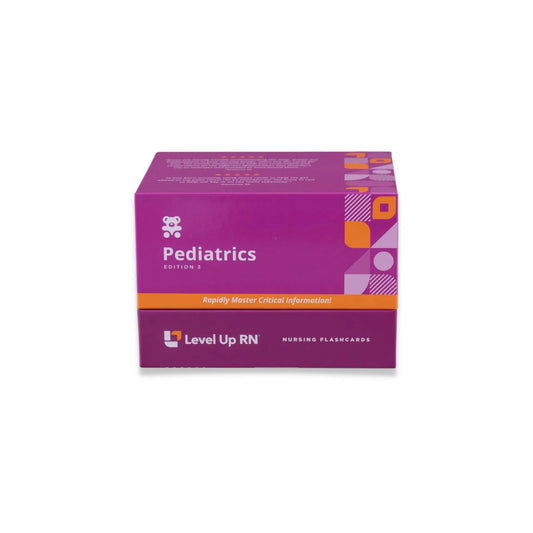Peds, part 36: Nervous Disorders - Reye's Syndrome, Lead Poisoning
Updated: Cathy ParkesReye's syndrome and Lead Poisoning. The risk factors, signs/symptoms, lab values, treatment, nursing care, and family teaching associated with these disorders.
Full Transcript: Peds, part 36: Nervous Disorders - Reye's Syndrome, Lead Poisoning
Full Transcript: Peds, part 36: Nervous Disorders - Reye's Syndrome, Lead Poisoning
Hi. I'm Cathy with Level Up RN. In this video, I am going to talk about Reye's syndrome and lead poisoning, which are two important topics for pediatric nursing. At the end of the video, I'm going to give you guys a little quiz to test your knowledge of some of the key points I'll be covering in this video, so definitely stay tuned for that. And if you have our Level Up RN pediatric nursing flashcards, pull those out so you can follow along with me.
Reye's syndrome is a rare but life-threatening disorder that causes swelling in the brain and in the liver, and it can result in symptoms such as vomiting, confusion, seizures, coma, and death. The two key risk factors associated with Reye's syndrome include a recent viral illness, such as influenza, and the use of aspirin. And because we have this connection between aspirin use and Reye's syndrome, it's imperative that we educate our families to avoid the use of aspirin in children, and instead use acetaminophen or ibuprofen as needed. So with Reye's syndrome, because we have this liver dysfunction, we're going to see an elevation in ALT, AST, bilirubin, as well as ammonia. Treatment of Reye's syndrome is mainly supportive and may include intubation and mechanical ventilation. Nursing care includes monitoring the patient for increased intracranial pressure and taking measures to help decrease that intracranial pressure. We also want to implement seizure precautions, and then we also need to implement bleeding precautions. Because we have liver dysfunction, the patient will be at higher risk for hemorrhaging.
Next, let's talk about lead poisoning. So excess lead exposure can result in multi-organ damage because lead interferes with normal cell functioning. And it can cause cognitive impairment, hearing impairment, growth delays, and other symptoms. Key risk factors associated with lead poisoning include pre-1978 housing, so a home built before 1978, as well as home renovation. So whenever I brought my kids in for their pediatrician visits for their well checks, I was handed a survey, which asked me, do I live in pre-1978 housing? Am I engaged in home renovations? And basically, they were screening our family for risk factors associated with lead poisoning. If a child has a blood lead level over 45 micrograms per deciliter, that is very high, and it is likely that the child will require chelation therapy. So with chelation therapy, a special drug is administered to the child, which binds the heavy metals in the body and helps to remove them from the body. In terms of nursing care and family teaching, for a family who has a child who has an elevation in blood lead levels, or if they live in a home that is at higher risk, we want to advise the families to provide the child with increased intake of calcium and iron in order to decrease lead absorption. In addition, we want to advise our families to wet-mop floors as well as check the home for peeling or flaking paint. And then we want our families to frequently wash the child's toys and pacifiers because, as you know, children are on the floor, and they're touching everything and putting their hands in their mouth or putting their pacifier in their mouth. So we want to keep everything very clean in order to decrease their lead exposure.
All right, it's quiz time. I've got three questions for you. First question. What are the two key risk factors associated with Reye's syndrome? The answer is a recent viral infection and aspirin use. Question number two. A house built before blank increases a child's risk of lead poisoning. The answer is 1978. Question number three. Chelation therapy is used for a serum lead level greater than blank micrograms per deciliter. The answer is 45. Okay, that's it for this video. I hope you found it helpful. If so, be sure to like the video, leave me a comment. Take care, and good luck with studying.
So [inaudible] we will see an [inaudible]--



1 comment
Excellent information in brief. Lots of information i get from the video. please take me as a learner and provide more and more about recent update regarding environmental Health hazards. Thanks a lot.